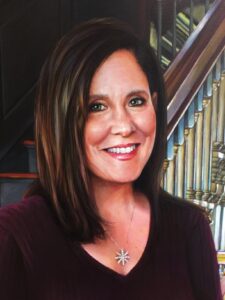Alyssa Briggs is the newly appointed Director of STEM Learning Ecosystems and Global Community of Practice
I spent the first part of my career as an investigative reporter. I was drawn to journalism because I believe that the media plays a critically important role in society and democracy. I worked on stories that I believe had a positive impact on people’s lives and was really luck to work at great news organizations that supported me for some powerful work. One series of stories exposed the health hazards of an oil refinery. Another series exposed dozens of missed murders and inaccurate death rulings. Other stories documented the disappearance and mismanagement of hundreds of millions of dollars of public funds, systemic racism in a police department and theft of public dollars by charter school operators.
I have a Bachelor’s, Master’s and PhD, but the best education I ever received was when I worked as a reporter and learned how to ask questions and, more importantly, listen.
More recently, I have been leading the NeoStem Ecosystem and managing the ecosystem’s exciting work with the world’s first-ever autonomous Soap Box Derby car. The work with the NeoStem Ecosystem has been incredibly rewarding because of the diversity of the partners with whom I’ve had a chance to work. From a science center and a Boys and Girls Club to an art museum and center for dance, the NeoStem Ecosystem is thriving in its efforts to bring diverse stakeholders to the table to work for improvements in students’ access to and engagement with high quality STEM.
2. What drew you to work in the STEM education field?
I grew up in Youngstown, Ohio, a once-thriving steel town that has been trying for decades to reinvent itself since the collapse of steel. Youngstown has improved since Black Monday in 1977, but it still suffers from a lack of big thinking and a poorly trained and educated workforce. While my degrees are in the liberal arts, I recognize the huge role that STEM can play in the rebirth of towns like my hometown.
3. Describe your role in the STEM Ecosystems.
As announced at our Community of Practice convening in Washington, DC, on July 1, I will become the Director of STEM Learning Ecosystems and Global Community of Practice. In my new role, I hope to continue advancing and deepening what has become an amazing community of practice. I look forward to meeting with local STEM Ecosystem leaders, listening and supporting the movement in a variety of ways.
Note: Julie Stolzer will continue her deep involvement with STEM Learning Ecosystems as Director of Special Projects, where she will be leading new initiatives related to the shared goal of improving STEM education for all.
4. What do think can be accomplished within the framework of the Ecosystems that can’t be done (or is more difficult) without it?
For years, we’ve understood that the zip codes where children live play a huge role in defining their lives and career paths. And countless programs and organizations are trying to address the issues of social mobility and inequity.
What separates the work of the STEM Learning Ecosystem and what makes it truly transformative is that it is embracing STEM as a pathway for social mobility. We know that students who study STEM have a far greater chance of achieving economic independence and success in their lives. But many understand this and are embracing STEM. What makes the work and the role of the STEM Learning Ecosystem so valuable and important is that we are — for the first time in our country’s history — able to unite countless organizations, programs, governmental organizations and cities in a unified effort. We share goals. We learn from one another. It is a grassroots initiative that has taken root.
5. Who was a role model for you when you were younger?
My mother is 88 and a retired second grade public school teacher. She was not exactly what you would call a “traditional” teacher.
She understood long ago that teaching and learning needed to embrace different models in order to engage students. Her students spent more time out of their classroom than they did inside of it. They had class in parks; they made and sold lemonade to learn about math and the role of work.
They created a circus for the extended school community with each student doing a different act to nurture creativity. They published a school-wide newspaper to exercise their voices and writing skills and to inform their families about their lives and work in school.
Each student wrote and published a book and distributed autographed copies at a book fair to learn about everything from writing, illustrating, designing and publishing.
But my mother’s understanding of the importance of experiential learning and originality extended far beyond the classroom. At home, there were no Barbie dolls or store-bought Halloween costumes. She challenged my sister and me to think about world problems – alternative energy, the role of women in society, and racism.
Today, she is still pushing boundaries and challenging the rest of us to think beyond expected norms.

